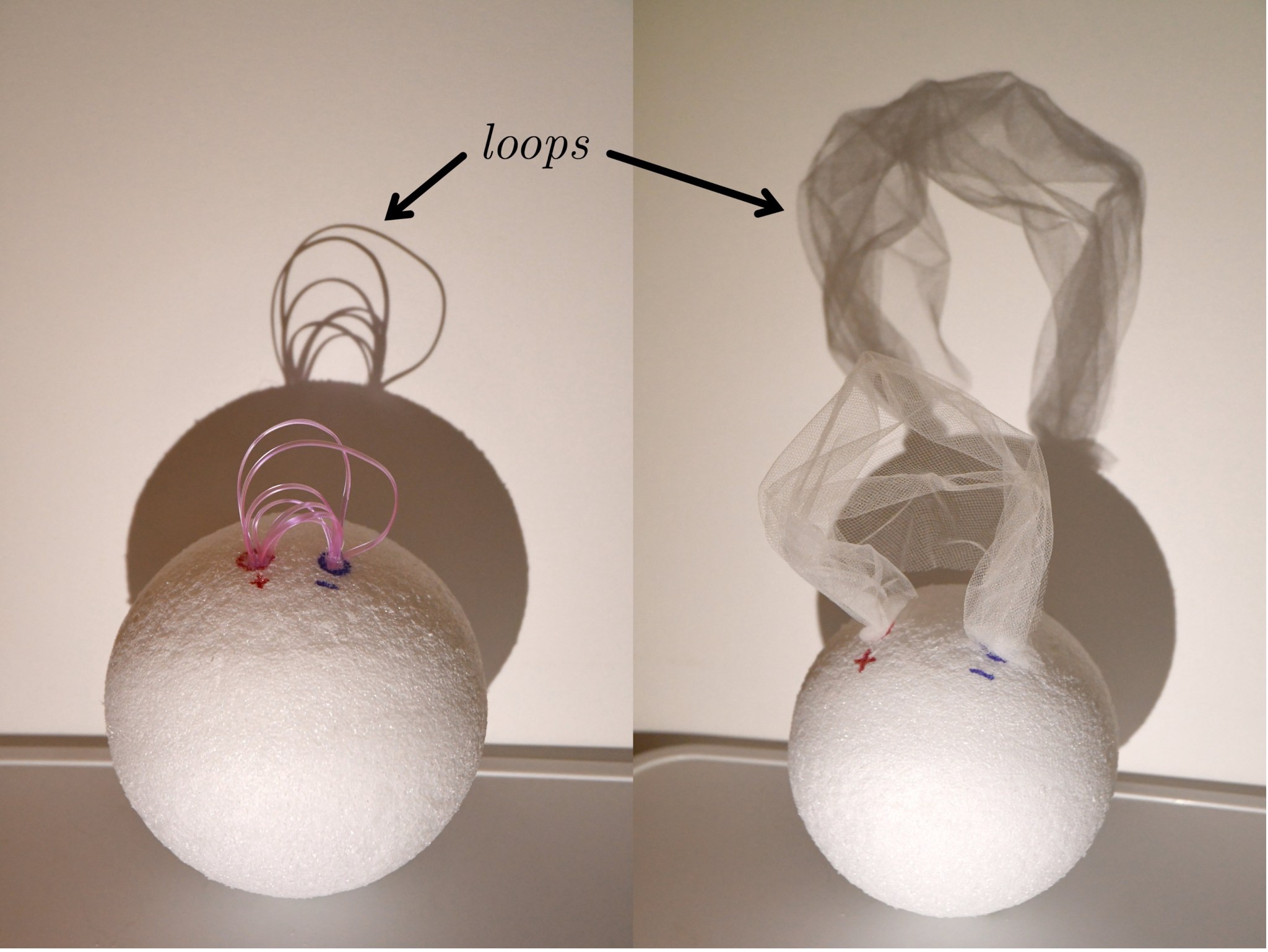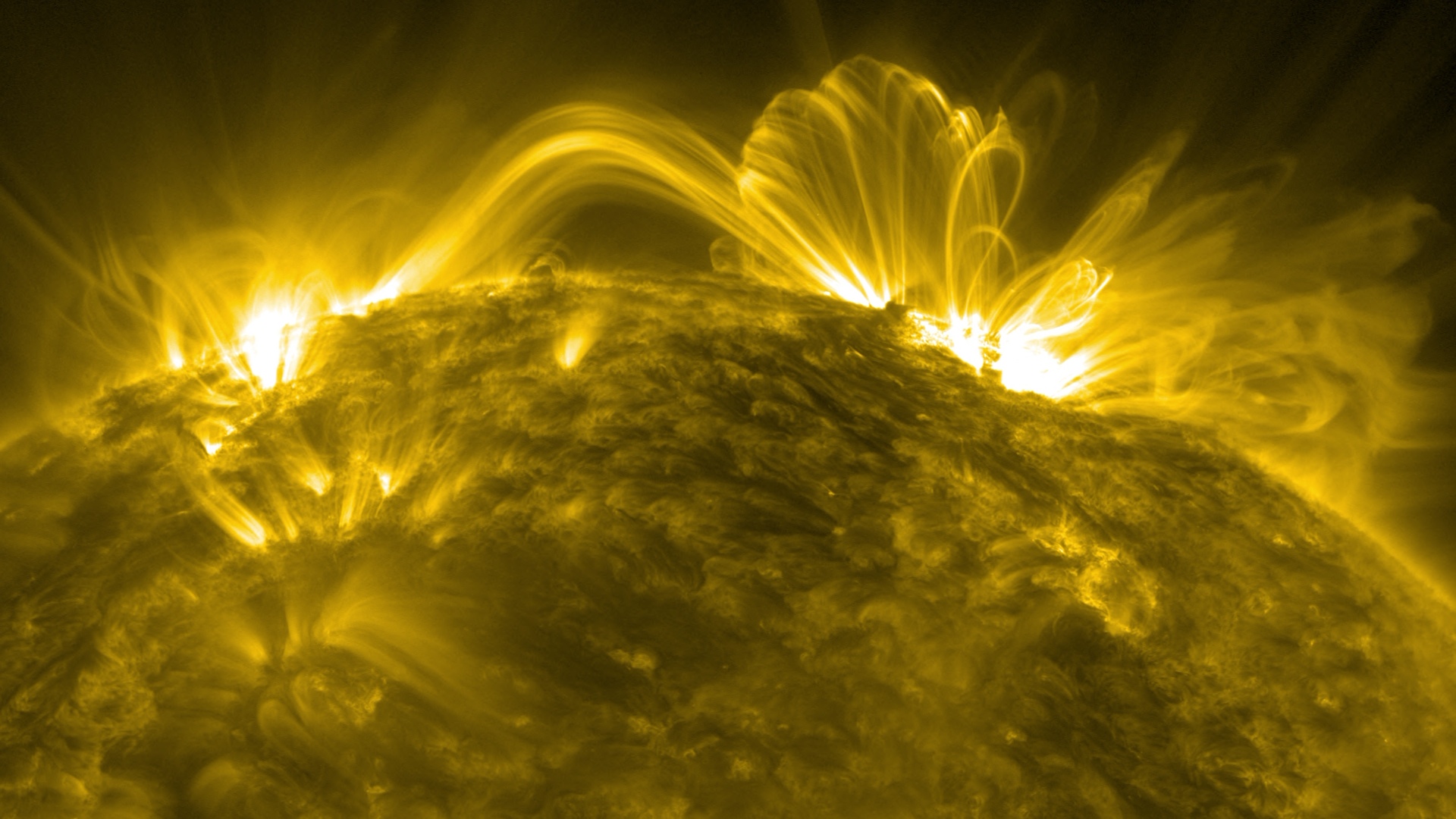In visible light, the Sun appears blank and featureless. But through a solar telescope in a different wavelength, it is revealed to be much, much more.
In extreme ultraviolet light, the Sun resembles a rumpled ball of yarn. It teems with giant radiant arcs known as coronal loops soaring through the Sun’s corona, or outer atmosphere. Coronal loops are considered fundamental to the Sun’s workings. Understanding how they form, change, and move is one of the key goals to understanding our closest star.
At least that’s what researchers have long assumed. In a recent paper, solar physicist Anna Malanushenko and her co-authors argue that some coronal loops may not be what they appear to be. Instead, they may sometimes be optical illusions created by folds or wrinkles in much larger “sheets” of solar material that the authors call coronal veils.

“If this is really correct, then we will have to change the entire way we look at and interpret coronal loops,” said Malanushenko, a scientist at the National Center for Atmospheric Research in Boulder, Colorado, and lead author of the paper published in The Astrophysical Journal.
Ever since capturing the first images of coronal loops in the late 60’s, scientists have hypothesized what their 3D structure might be. The conventional model saw them as magnetic “tubes” formed by the Sun’s magnetic field lines. The tubes themselves are invisible; what we see is the bright solar material that flows through them like water through a garden hose. This “garden hose” model of coronal loops fit well with known physics and there was no reason to doubt it, at least at first. But eventually, observations that didn’t fit began to pile up.
Just as Earth’s air gets thinner at higher altitudes, the Sun’s bright plasma, or electrically charged gas, gets thinner with height. That’s why it grows dimmer with height, and if coronal loops truly are tubes of plasma, so should they. But many loops maintain a consistent brightness, with no obvious explanation.

If coronal loops trace the Sun’s magnetic field lines, they should balloon as they move away from the Sun as that magnetic field expands to fill space. “But they don’t get nearly as wide as we think they should,” Malanushenko said. “Most of them stay too thin and we don’t understand why.”
Something wasn’t adding up, and Malanushenko started to question the observations themselves. After all, the Sun’s corona is “optically thin,” or translucent, like fog or smoke. She wanted to understand the optical tricks that could occur in that kind of environment.
Malanushenko decided to simulate the process of observing coronal loops with a computer. She repurposed a 3D simulation of the Sun originally used to study flares, then wrote a program to “observe” it. She fired up the simulation, and her program took 2D “images” of it, just as telescopes give us 2D snapshots of the real Sun. Sure enough, the snapshots revealed bright arcs – artificial coronal loops on a simulated Sun.
But unlike the real Sun, Malanushenko could pause the simulated Sun and look at its 3D structures behind them. And she found something markedly different from garden hose-like tubes.
“I don’t have words how to describe it, because this is not like anything that we see on Earth,” said Malanushenko, “I want to say this formation looks like clouds of smoke, or maybe a veil or curtains that are wrinkled.”
Malanushenko created a simple model to illustrate how a veil could produce the illusion of coronal loops. The shadow created against the wall represents the 2D image we see in solar telescopes. The veil’s folds and wrinkles create a pattern of darker and brighter strands, in some ways similar to the image cast by real tube-like strands.
“But many of the strands that you see here, they’re just a projection effect. They’re not real,” Malanushenko said.
Malanushenko and her co-authors are quick to clarify that not all coronal loops are visual illusions. There were many instances where garden hose-like structures do really form, even in the simulation that Malanushenko studied.
“It would be exciting if we could say ‘Our thinking was all wrong, we have a totally new paradigm,’” said Jim Klimchuk, a solar physicist at NASA’s Goddard Space Flight Center and coauthor of the paper. “It’s not that way at all – but these veils, I’m sure they do exist, and now it’s a question of proportions: are veils more common or are loops more common?”
One thing the co-authors agree on is that there’s now plenty more work to do.
“Now, do we have any idea why those veil structures are produced?” asked Malanushenko. “No! We literally just discovered them. Now we need to explain them, and we don’t have a good explanation yet.”
By Miles Hatfield
NASA’s Goddard Space Flight Center, Greenbelt, Md.




























